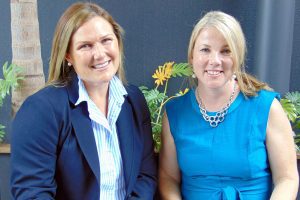This year’s theme for World Sight Day is Universal Eye Health with a call to action for no more avoidable blindness.
World Sight Day is a a joint initiative of the World Health Organization (WHO) and the International Agency for the Prevention of Blindness and aims to raise awareness of the importance of eye health and how to prevent vision impairment and blindness.
Addressing the National Press Club in Canberra on Wednesday 8 October, Vision 2020 Australia Chair Amanda Vanstone said Australia is facing staggering blindness and vision loss projections as the population ages.
The former parliamentarian also used World Sight Day Address to call for a smarter, more coordinated, approach to eye health.
Presenting a plan to tackle avoidable blindness and vision impairment, Ms Vanstone told the audience that investing in eye health makes both social and economic sense in Australia and our region.
Ms Vanstone said the cost of vision loss in Australia in 2009 was $16.6 billion. “With an ageing population it will keep rising,” she said.
“People who are blind or vision impaired are twice as likely to have a fall, four to eight times likely to suffer from a hip fracture, enter nursing homes five years early, have a reduced life expectancy and are at three times the risk of depression. “Doing something effective about vision loss and eye care offers tremendous savings.”
The full World Sight Day National Press Address is available on ABC iView: http://iview.abc.net.au/programs/national-press-club-address/NC1406C037S00
Health Minister Peter Dutton said the Australian Government strongly supported efforts to prevent avoidable blindness and visual impairment, both nationally and internationally.
“The Australian Government recognises the importance of improving eye care and preventing avoidable blindness and visual impairment,” Mr Dutton said. “Vision impairment and vision loss impact significantly on the individual and on the community. Early detection and treatment are the keys to preventing blindness and vision loss.”
To improve the evidence base on vision impairment, Vision 2010 Australia was provided with $1.1 million Government funding to develop a national eye health survey.
“This survey will provide important data to inform future activity in the area of Indigenous and non-Indigenous eye health. It’s a key priority for the eye health sector and will provide baseline data to assist the Australian Government to meet our WHO reporting obligations under the Global Action Plan,” Mr Dutton said.
Last month, the government’s Implementation Plan for the National Eye Health Framework was launched. The Implementation Plan focusses on actions within the Health portfolio, but also seeks to build on existing eye health care services and programmes and improve coordination of effort.
“This plan will inform the Government’s efforts to achieve progress against both the National Framework and the WHO global and regional action plans,” Mr Dutton said.




















Add Comment